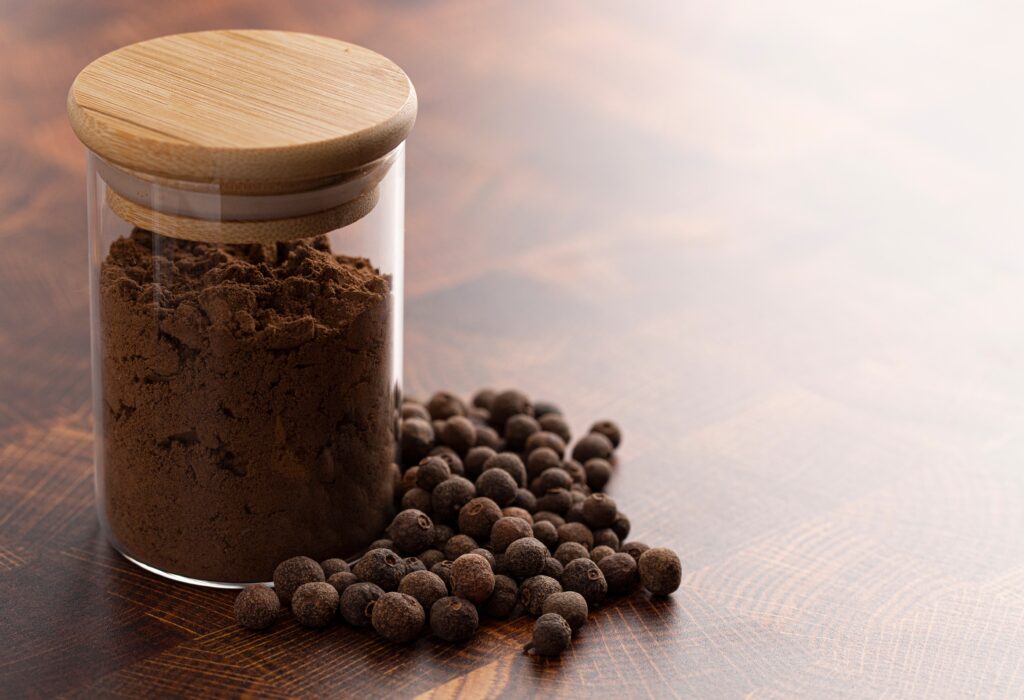Discovering Allspice: A Spice that Bridges Flavors
The Unique Taste of Allspice: Warmth and Complexity
Allspice, often described as the epitome of ‘one spice to taste like many’, brings a unique combination of warmth and complexity to African cuisine. Its name reflects its flavor profile, reminiscent of cinnamon, nutmeg, and cloves, all rolled into one. This singular spice, derived from the dried berries of the Pimenta dioica tree, adds a spicy but sweet nuance to dishes. Its versatile nature allows it to meld seamlessly in various recipes, enhancing flavors with its rich, warm, and slightly peppery undertones.
Allspice in African Culinary History
Allspice has a rich history in African cooking, having been introduced to the continent through spice trade routes. In African cuisine, it’s celebrated for its ability to add depth to both sweet and savory dishes. From Moroccan tagines to Ethiopian stews, allspice is a key ingredient that contributes to the distinct flavor profiles of these traditional dishes. Its use in African cooking is a testament to the continent’s rich history of culinary exploration and adaptation, embracing flavors from across the globe.

The Dual Role of Allspice in Sweet and Savory African Recipes
Enhancing Savory Dishes with Allspice
In savory African cuisine, allspice is a go-to spice for adding a warm, complex flavor to various dishes. It is particularly prominent in meat dishes, stews, and sauces, where it complements and enhances the natural flavors of the ingredients. Allspice is also a common addition to vegetable dishes and legumes, offering a subtle but distinct depth. In recipes like Moroccan lamb tagines or Ethiopian beef stews, allspice works harmoniously with other spices, contributing to the rich, layered flavors that characterize these traditional meals.
Allspice in African Desserts and Sweet Treats
Not limited to savory dishes, allspice also finds its way into African desserts and sweet treats. It adds a warm, spicy note to baked goods, such as cakes, cookies, and breads. Allspice is also used in fruit-based desserts, where it complements the natural sweetness of the fruits, adding an extra dimension of flavor. Its versatility makes it a favorite in creating spice blends for desserts, enhancing the overall taste profile with its unique blend of sweet and spicy notes.
Mastering the Use of Allspice in Cooking
Selecting and Storing Allspice for Optimal Flavor
When selecting allspice, you can choose between whole berries and ground allspice. Whole berries, when freshly ground, offer the most vibrant flavor. Store them in an airtight container in a cool, dark place, where they can retain their potency for up to a year. Ground allspice, while convenient, has a shorter shelf life and should be used within a few months. Keeping allspice away from heat and light will help preserve its distinctive warm and spicy aroma.
Culinary Techniques for Cooking with Allspice
Allspice can be incorporated into a variety of cooking techniques. When used in savory dishes, it’s often added at the beginning of the cooking process to allow its flavors to meld with other ingredients. Allspice complements other warm spices like cinnamon and nutmeg in baking and sweet preparations. A little allspice goes a long way, so start with a small amount and adjust to taste. Its versatility makes it an excellent spice for experimenting in different types of dishes, from savory stews to sweet baked goods.
Allspice Beyond African Borders: Global Culinary Uses
Allspice in International Cuisine
Allspice, while a staple in African cuisine, also enjoys widespread use in various international cuisines. In the Caribbean, it’s a key ingredient in Jamaican jerk seasoning, lending its warm, spicy notes to the signature flavor of jerk dishes. Middle Eastern cuisines utilize allspice in a variety of meat dishes and rice preparations, appreciating its ability to add depth and warmth. In European cooking, allspice is often found in baking, pickling, and in the creation of mulled wines and ciders, where it contributes to the rich, comforting flavors typical of these dishes.
Innovative Uses of Allspice in Modern Cooking
The versatility of allspice makes it a popular choice in contemporary and fusion cooking. Modern chefs are exploring new ways to incorporate allspice into their creations, using it to spice up everything from gourmet sauces to inventive desserts. Its unique flavor profile allows it to be paired with a wide range of ingredients, opening up possibilities for creative and unexpected combinations. In the realm of health-focused cuisine, allspice is valued for its potential health benefits and is being incorporated into nutritionally balanced recipes.
Creative Recipes: Bringing Allspice into Your Kitchen

Classic African Recipes Reimagined with Allspice
Enhance classic African dishes with the unique flavor of allspice. A Spiced Allspice Chicken Stew, featuring allspice’s warm notes, offers a new take on traditional stews. For a vegetarian delight, try Allspice-Infused Lentils, where the spice complements the earthiness of the legumes. In baking, an Allspice-Spiced Sweet Bread can bring a comforting and aromatic twist to familiar flavors.
Contemporary African Dishes Featuring Allspice
Explore the modern culinary landscape with allspice. An innovative Allspice-Seasoned Grilled Fish combines traditional African spices with contemporary cooking techniques. For dessert, an Allspice-Flavored Fruit Compote with a blend of tropical fruits can showcase the spice’s versatility in sweet preparations. Allspice also shines in beverages, such as in a Spiced Allspice Tea, offering a warm, aromatic drink option.
Allspice in African Cuisine: FAQs
1. How Should Allspice Be Used in Cooking?
Allspice should be used sparingly due to its strong flavor. It can be added whole in slow-cooked dishes or ground for immediate flavor. Allspice works well with other spices and is suitable for sweet and savory dishes.
2. Can Allspice Be Used in Baking?
Yes, allspice is a popular ingredient in baking. It adds a warm, spicy note to cakes, cookies, and breads, and pairs well with ingredients like fruits, nuts, and chocolate.
3. What Are the Health Benefits of Allspice?
Allspice is known for its anti-inflammatory properties and antioxidant content. It may aid digestion and has traditionally been used to alleviate stomach discomfort. Its eugenol content can also have mild analgesic and antiseptic effects.
4. Is There a Difference Between Ground and Whole Allspice?
Yes, ground allspice loses its flavor more quickly than whole allspice berries. When freshly ground, whole berries offer a more potent and aromatic flavor. Ground allspice is convenient but should be used within a few months, while whole berries can last longer.
5. How Can I Store Allspice to Preserve Its Flavor?
Allspice should be stored in a cool, dry place away from sunlight. Whole allspice berries stored in an airtight container can retain their flavor for up to a year, while ground allspice should be used within a few months for best results.
6. Can Allspice Be Used in Vegetarian and Vegan Dishes?
Absolutely. Allspice’s versatile flavor profile makes it an excellent addition to vegetarian and vegan dishes, adding depth and warmth to legumes, vegetables, and meat substitutes.
7. Are There Any Special Considerations When Cooking with Allspice?
Given its strong flavor, it’s important to use allspice in moderation to avoid overpowering other flavors in a dish. It’s also beneficial to pair it with complementary spices to create a balanced and harmonious flavor profile.
